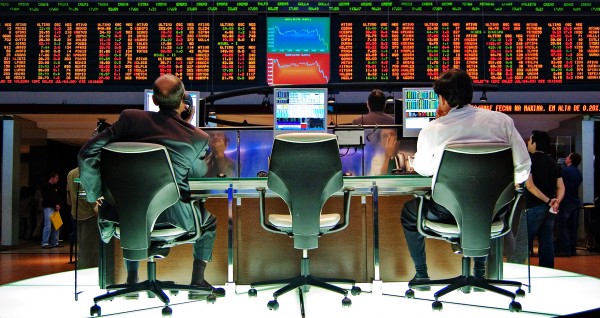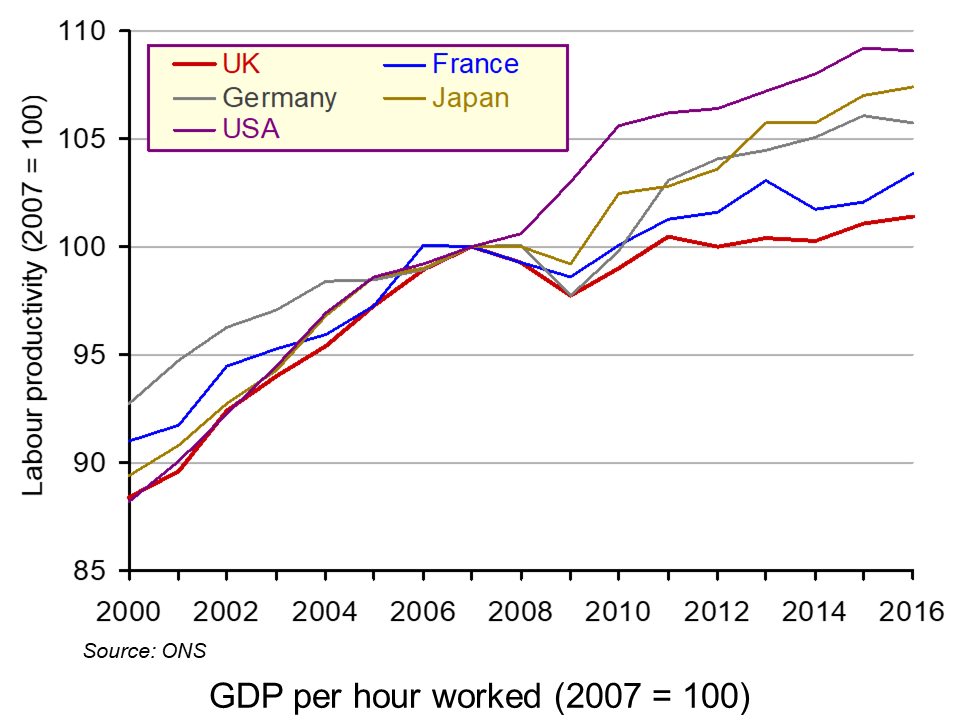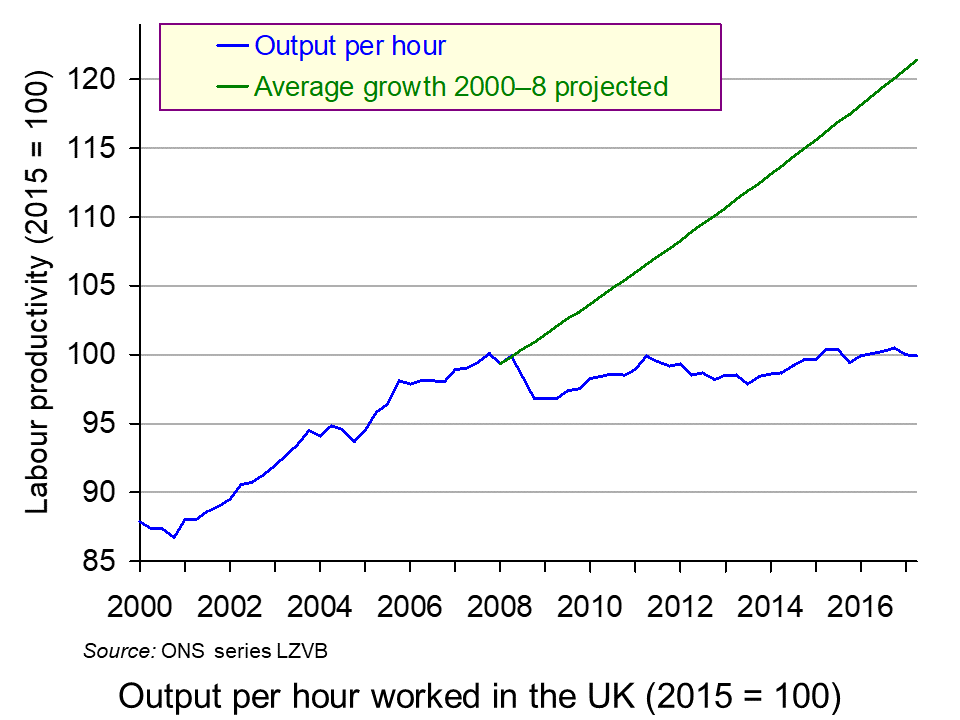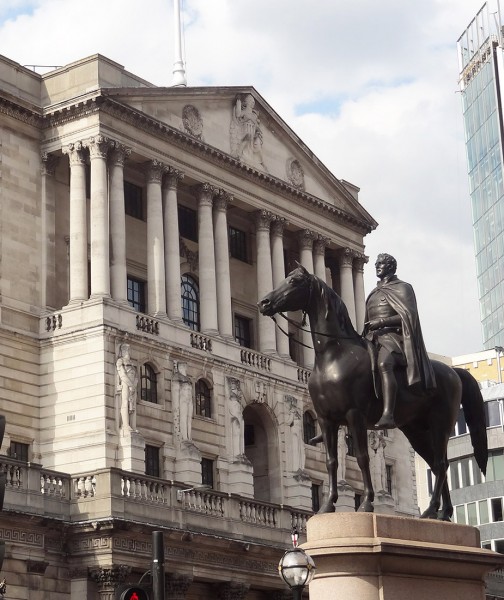 Thirty years ago, on Monday 19 October 1987, stock markets around the world tumbled. The day has been dubbed ‘Black Monday’. Wall Street fell by 22% – its biggest ever one-day fall. The FTSE 100 fell by 10.8% and by a further 12.2% the next day.
Thirty years ago, on Monday 19 October 1987, stock markets around the world tumbled. The day has been dubbed ‘Black Monday’. Wall Street fell by 22% – its biggest ever one-day fall. The FTSE 100 fell by 10.8% and by a further 12.2% the next day.
The crash caught most people totally by surprise and has never been fully explained. The most likely cause was an excessive rise in the previous three years, when share prices more than doubled. This was combined with the lack of ‘circuit breakers’, which today would prevent excessive selling, and a ‘herd’ effect as people rushed to get out of shares before they fell any further, creating a massive wave of destabilising speculation.
Within a few weeks, share prices started rising again and within three years shares were once again trading at levels before Black Monday.
 Looking back to the events of 30 years ago, the question many fund managers and others are asking is whether global stock markets are in for another dramatic downward correction. But there is no consensus of opinion about the answer.
Looking back to the events of 30 years ago, the question many fund managers and others are asking is whether global stock markets are in for another dramatic downward correction. But there is no consensus of opinion about the answer.
Those predicting a downward correction – possibly dramatic – point to the fact that stock markets, apart from a dip in mid-2016, have experienced several years of growth, with yields now similar to those in 1987. Price/earnings ratios, at around 18, are high relative to historical averages.
What is more, the huge increases in money supply from quantitative easing, which helped to inflate share prices, are coming to an end. The USA ceased its programme three years ago and the ECB is considering winding down its programme.
Also, once a downward correction starts, destabilising speculation is likely to kick in, with people selling shares before they go any lower. This could be significantly aggravated by the rise of electronic markets with computerised high-frequency trading.
However, people predicting that there will be little or no downward correction, and even a continuing bull market, point to differences between now and 1987. First, the alternatives to shares look much less attractive than then. Bond yields and interest rates in banks (at close to zero), unlike in 1987, are much lower than the dividend yields on shares (at around 4%). Second, there are circuit breakers in stock markets that suspend dealing in cases of large falls.
But even if there is a downward correction, it will probably be relatively short-lived, with the upward trend in share prices continuing over the long term. If you look at the chart above, you can see this trend, but you can also see periods of falling share prices in the late 1990s/early 2000s and in the financial crisis of 2008–9. Looking back to 1987, it seems like a mere blip from the perspective of 30 years – but it certainly didn’t at the time.
Articles
Three decades since Black Monday – are markets on the verge of another tumble? The Telegraph, Lucy Burton (19/10/17)
Black Monday: 30 years on from the 1987 crash Citywire, Michelle McGagh (19/10/17)
30 Years Ago: Lessons From the 1987 Market Crash U.S.News, Debbie Carlson (12/10/17)
Black Monday: Can a 1987-style stock market crash happen again? USA Today, Adam Shell (19/10/17)
Black Monday anniversary: How the 2017 stock market compares with 1987 MarketWatch, William Watts (19/10/17)
30 years after Black Monday, could stock market crash again? MarketWatch, William Watts (19/10/17)
 The Crash of ’87, From the Wall Street Players Who Lived It Bloomberg, Richard Dewey (19/10/17)
The Crash of ’87, From the Wall Street Players Who Lived It Bloomberg, Richard Dewey (19/10/17)
Questions
- Explain what are meant by ‘bull markets’ and ‘bear markets’.
- Share prices are determined by demand and supply. Identify the various demand- and supply-side factors that have led to the current long bull-market run.
- What caused the Black Monday crash in 1987?
- For what reasons may global stock markets soon (a) experience, (b) not experience a downward correction?
- Distinguish between stabilising speculation and destabilising speculation on stock markets.
- What determines when a downward correction on stock markets bottoms out?
- Explain how stock market circuit breakers work. Can they prevent a fundamental correction?
- Does the rise in computerised trading make a stock market crash more or less likely?
 In various blogs, we’ve looked at the UK’s low productivity growth, both relative to other countries and relative to the pre-1998 financial crisis (see, for example, The UK productivity puzzle and Productivity should we be optimistic?). Productivity is what drives long-term economic growth as it determines potential GDP. If long-term growth is seen as desirable, then a fall in productivity represents a serious economic problem.
In various blogs, we’ve looked at the UK’s low productivity growth, both relative to other countries and relative to the pre-1998 financial crisis (see, for example, The UK productivity puzzle and Productivity should we be optimistic?). Productivity is what drives long-term economic growth as it determines potential GDP. If long-term growth is seen as desirable, then a fall in productivity represents a serious economic problem.
Recent data suggest that the problem, if anything, is worse than previously thought and does not seem to be getting better. Productivity is now some 21% below what it would have been had productivity growth continued at the rate experienced in the years before the financial crisis (see second chart below).
In its latest productivity statistics, the ONS reports that labour productivity (in terms of output per hour worked) fell by 0.1% in the second quarter of 2017. This follows a fall of 0.5% in quarter 1. Over the whole year to 2017 Q2, productivity fell by 0.3%.
 Most other major developed countries have much higher productivity than the UK. In 2016, Italy’s productivity was 9.9% higher than the UK’s; the USA’s was 27.9%, France’s was 28.7% and Germany’s was 34.5% higher. What is more, their productivity has grown faster (see chart).
Most other major developed countries have much higher productivity than the UK. In 2016, Italy’s productivity was 9.9% higher than the UK’s; the USA’s was 27.9%, France’s was 28.7% and Germany’s was 34.5% higher. What is more, their productivity has grown faster (see chart).
But what of the future? The Office for Budget responsibility publishes forecasts for productivity growth, but has consistently overestimated it. After predicting several times in the past that UK productivity growth would rise towards its pre-financial crisis trend of around 2% per year, in its October 2017 Forecast evaluation Report it recognises that this was too optimisitic and revises downwards its forecasts for productivity growth for 2017 and beyond.
As the period of historically weak productivity growth lengthens, it seems less plausible to assume that potential and actual productivity growth will recover over the medium term to the extent assumed in our most recent forecasts. Over the past five years, growth in output per hour has averaged 0.2 per cent. This looks set to be a better guide to productivity growth in 2017 than our March forecast of 1.6 per cent.
Looking further ahead, it no longer seems central to assume that productivity growth will recover to the 1.8 per cent we assumed in March 2017 within five years.
 But why has productivity growth not returned to pre-crisis levels? There are five possible explanations.
But why has productivity growth not returned to pre-crisis levels? There are five possible explanations.
The first is that there has been labour hoarding. But with companies hiring more workers, this is unlikely still to be true for most employers.
The second is that very low interest rates have allowed some low-productivity companies to survive, which might otherwise have been driven out of business.
The third is a reluctance of banks to lend for investment. After the financial crisis this was driven by the need for them to repair their balance sheets. Today, it may simply be greater risk aversion than before the financial crisis, especially with the uncertainties surrounding Brexit.
The fourth is a fall in firms’ desire to invest. Although investment has recovered somewhat from the years directly following the financial crisis, it is still lower than might be expected in an economy that is no longer is recession. Indeed, there has been a much slower investment recovery than occurred after previous recessions.
The fifth is greater flexibility in the labour market, which has subdued wages and has allowed firms to respond to higher demand by taking on more relatively low-productivity workers rather than having to invest in human capital or technology.
Whatever the explanation, the solution is for more investment in both technology and in physical and human capital, whether by the private or the public sector. The question is how to stimulate such investment.
Articles
UK productivity lagging well behind G7 peers – ONS Financial Times, Katie Martin (6/10/17)
UK productivity sees further fall BBC News (6/10/17)
UK resigned to endless productivity gloom The Telegraph, Tim Wallace (10/10/17)
UK productivity estimates must be ‘significantly’ lowered, admits OBR The Guardian, Richard Partington and Phillip Inman (10/10/17)
UK productivity growth to remain sluggish, says OBR BBC News (10/10/17)
Official Treasury forecaster slashes UK productivity growth forecast, signalling hole in public finances for November Budget Independent, Ben Chu (10/10/17)
The Guardian view on Britain’s productive forces: they are not working The Guardian, Editorial (10/10/17)
Mind the productivity gap: the story behind sluggish earnings The Telegraph, Anna Isaac (26/10/17)
Data and statistical analysis
Labour productivity: April to June 2017 ONS Statistical Bulletin (6/10/17)
International comparisons of productivity ONS Dataset (6/10/17)
Forecast evaluation report OBR (October 2017)
Questions
- Explain the relationship between labour productivity and potential GDP.
- What is the relationship between actual growth in GDP and labour productivity?
- Why does the UK lag France and Germany more in output per hour than in output per worker, but the USA more in output per worker than in output per hour?
- Is there anything about the UK system of financing investment that results in lower investment than in other developed countries?
- Why are firms reluctant to invest?
- In what ways could public investment increase productivity?
- What measures would you recommend to encourage greater investment and why?
- How do expectations affect the growth in labour productivity?
 In two recent speeches, the Governor of the Bank of England, Mark Carney, and the Bank’s Chief Economist, Andy Haldane, have reflected on the growing inequality in the UK and other countries. They have also answered criticisms that monetary policy has exacerbated the problem. As, Andy Haldane puts it:
In two recent speeches, the Governor of the Bank of England, Mark Carney, and the Bank’s Chief Economist, Andy Haldane, have reflected on the growing inequality in the UK and other countries. They have also answered criticisms that monetary policy has exacerbated the problem. As, Andy Haldane puts it:
It is clear monetary policy has played a material role in lifting all boats since the financial crisis broke. …[But] even if monetary policy has lifted all boats, and could plausibly do so again if needed, that does not mean it has done so equally. In particular, concerns have been expressed about the potential distributional effects of monetary policy.
Jan Vlieghe [member of the Monetary Policy Committee] has recently looked at how monetary policy may have affected the fortunes of, among others, savers, pension funds and pensioners. The empirical evidence does not suggest these cohorts have been disadvantaged to any significant degree by the monetary policy stance. For most members in each cohort, the boost to their asset portfolios and the improved wages and profits due to a stronger economy more than offset the direct loss of income from lower rates [of interest on savings accounts].
Andy Haldane’s speech focused largely on regional inequality. He argued that productivity has grown much more rapidly in the more prosperous regions, such as London and the South East. This has resulted in rising inequality in wages between different parts of the UK. Policies that focus on raising productivity in the less prosperous regions could play a major role in reducing income inequality.
Mark Carney’s speech echoed a lot of what Andy Haldane was saying. He argued that expansionary monetary policy has, according to Bank of England modelling, “raised the level of GDP by around 8% relative to trend and lowered unemployment by 4 percentage points at their peak”. And the benefits have been felt by virtually everyone. Even savers have generally gained:
That’s in part because, to a large extent, the thrifty saver and the rich asset holder are often one and the same. Just 2% of households have deposit holdings in excess of £5000, few other financial assets and don’t own a home.
But some people still gained more from monetary policy than others – enough to contribute to widening inequality.
Losers from the lost decade
 Mark Carney looked beyond monetary policy and argued that the UK has experienced a ‘lost decade’, where real incomes today are little higher than 10 years ago – the first time this has happened for 150 years. This stalling of average real incomes has been accompanied by widening inequality between various groups, where a few have got a lot richer, especially the top 1%, and many have got poorer. Although the Gini coefficient has remained relatively constant in recent years, there has been a widening gap between the generations.
Mark Carney looked beyond monetary policy and argued that the UK has experienced a ‘lost decade’, where real incomes today are little higher than 10 years ago – the first time this has happened for 150 years. This stalling of average real incomes has been accompanied by widening inequality between various groups, where a few have got a lot richer, especially the top 1%, and many have got poorer. Although the Gini coefficient has remained relatively constant in recent years, there has been a widening gap between the generations.
For both income and wealth, some of the most significant shifts have happened across generations. A typical millennial earned £8000 less during their twenties than their predecessors. Since 2007, those over 60 have seen their incomes rise at five times the rate of the population as a whole. Moreover, rising real house prices between the mid-1990s and the late 2000s have created a growing disparity between older home owners and younger renters.
This pattern has been repeated around the developed world and has led to disillusionment with globalisation and a rise in populism.  Globalisation has been “associated with low wages, insecure employment, stateless corporations and striking inequalities”. (Click here for a PowerPoint of the chart.)
Globalisation has been “associated with low wages, insecure employment, stateless corporations and striking inequalities”. (Click here for a PowerPoint of the chart.)
And populism has been reflected in the crisis in Greece, the Brexit vote, Donald Trump’s election, the rise of the National Front in France, the No vote in the Italian referendum on reforming the constitution and the rise in anti-establishment parties and sentiment generally. Mainstream parties are beginning to realise that concerns over globalisation, inequality and a sense of disempowerment must be addressed.
Solutions to inequality
As far as solutions are concerned, central must be a rise in general productivity that increases potential real income.
Boosting the determinants of long-run prosperity is the job of government’s structural, or supply-side policies. These government policies influence the economy’s investment in education and skills; its capacity for research and development; the quality of its core institutions, such as the rule of law; the effectiveness of its regulatory environment; the flexibility of its labour market; the intensity of competition; and its openness to trade and investment.
But will this supply-side approach be enough to bring both greater prosperity and greater equality? Will an openness to trade be accepted by populist politicians who blame globalisation and the unequal gains from international trade for the plight of the poor? Carney recognises the problem and argues that:
For the societies of free-trading, networked countries to prosper, they must first re-distribute some of the gains from trade and technology, and then re-skill and reconnect all of their citizens. By doing so, they can put individuals back in control.
For free trade to benefit all requires some redistribution. There are limits, of course, because of fiscal constraints at the macro level and the need to maintain incentives at the micro level. Fostering dependency on the state is no way to increase human agency, even though a safety net is needed to cushion shocks and smooth adjustment.
Redistribution and fairness also means turning back the tide of stateless corporations.
… Because technology and trade are constantly evolving and can lead to rapid shifts in production, the commitment to reskilling all workers must be continual.
In a job market subject to frequent, radical changes, people’s prospects depend on direct and creative engagement with global markets. Lifelong learning, ever-greening skills and cooperative training will become more important than ever.
But whether these prescriptions will be accepted by people across the developed world who feel that the capitalist system has failed them and who look to more radical solutions, whether from the left or the right, remains to be seen. And whether they will be adopted by governments is another question!
Webcast
 Roscoe Lecture Bank of England on YouTube, Mark Carney (5/12/16)
Roscoe Lecture Bank of England on YouTube, Mark Carney (5/12/16)
Speeches
One Car, Two Car, Red Car, Blue Car Bank of England, Andrew Haldane (2/12/16)
The Spectre of Monetarism: Roscoe Lecture, Liverpool John Moores University Bank of England, Mark Carney (5/12/16)
Articles: Andrew Haldane speech
Bank of England chief economist says monetary stimulus stopped ‘left behind’ from drowning Independent, Ben Chu (2/12/16)
BoE’s Andrew Haldane warns of regional growth inequality BBC News (2/12/16)
‘Regions would have faced contraction’ without rate cuts and money printing Belfast Telegraph (2/12/16)
Bank of England chief: UK can be transformed if it copies progress on Teesside Gazette Live, Mike Hughes (2/12/16)
Articles: Mark Carney speech
Governor’s ‘dynamite’ warning on wages and globalisation Sky News, Ed Conway (6/12/16)
Mark Carney warns Britain is suffering first lost decade since 1860 as people across Europe lose trust in globalisation The Telegraph, Szu Ping Chan and Peter Foster (5/12/16)
Mark Carney: we must tackle isolation and detachment caused by globalisation The Guardian, Katie Allen (6/12/16)
Bank of England’s Carney warns of strains from globalization Reuters, William Schomberg and David Milliken (6/12/16)
CARNEY: Britain is in ‘the first lost decade since the 1860s’ Business Insider UK, Oscar Williams-Grut (7/12/16)
Carney warns about popular disillusion with capitalism BBC News (5/12/16)
Some fresh ideas to tackle social insecurity Guardian letters (7/12/16)
Report
Monitoring poverty and social exclusion 2016 (MPSE) Joseph Rowntree Foundation, Adam Tinson, Carla Ayrton, Karen Barker, Theo Barry Born, Hannah Aldridge and Peter Kenway (7/12/16)
Data
OECD Income Distribution Database (IDD): Gini, poverty, income, Methods and Concepts OECD
The effects of taxes and benefits on household income Statistical bulletins ONS
Questions
- Has monetary policy aggravated the problem of inequality? Explain.
- Comment on Charts 11a and 11b on page 19 of the Haldane speech.
- Does the process of globalisation help to reduce inequality or does it make it worse?
- If countries specialise in the production of goods in which they have a comparative advantage, does this encourage them to use more or less of relatively cheap factors of production? How does this impact on factor prices? How does this affect income distribution?
- How might smaller-scale firms “by-pass big corporates and engage in a form of artisanal globalisation; a revolution that could bring cottage industry full circle”?
- Why has regional inequality increased in the UK?
- What types of supply-side policy would help to reduce inequality?
- Explain the following statement from Mark Carney’s speech: “For free trade to benefit all requires some redistribution. There are limits, of course, because of fiscal constraints at the macro level and the need to maintain incentives at the micro level”.
- Mark Carney stated that “redistribution and fairness also means turning back the tide of stateless corporations”. How might this be done?
 Some commentators have seen the victory of Donald Trump and, prior to that, the Brexit vote as symptoms of a crisis in capitalism. Much of the campaigning in the US election, both by Donald Trump on the right and Bernie Sanders on the left focused on the plight of the poor. Whether the blame was put on immigration, big government, international organisations, the banks, cheap imports undercutting jobs or a lack of social protection, the message was clear: capitalism is failing to improve the lot of the majority. A small elite is getting significantly richer while the majority sees little or no gain in their living standards and a rise in uncertainty.
Some commentators have seen the victory of Donald Trump and, prior to that, the Brexit vote as symptoms of a crisis in capitalism. Much of the campaigning in the US election, both by Donald Trump on the right and Bernie Sanders on the left focused on the plight of the poor. Whether the blame was put on immigration, big government, international organisations, the banks, cheap imports undercutting jobs or a lack of social protection, the message was clear: capitalism is failing to improve the lot of the majority. A small elite is getting significantly richer while the majority sees little or no gain in their living standards and a rise in uncertainty.
The articles below look at this crisis. They examine the causes, which they agree go back many years as capitalism has evolved. The financial crash of 2008 and the slow recovery since are symptomatic of the underlying changes in capitalism.
The Friedman article focuses on the slowing growth in technological advance and the problem of aging populations. What technological progress there is is not raising incomes generally, but is benefiting a few entrepreneurs and financiers. General rises in income may eventually come, but it may take decades before robotics, biotechnological advances, e-commerce and other breakthrough technologies filter through to higher incomes for everyone. In the meantime, increased competition through globalisation is depressing the incomes of the poor and economically immobile.
 All the articles look at the rise of the rich. The difference with the past is that the people who are gaining the most are not doing so from production but from financial dealing or rental income; they have gained while the real economy has stagnated.
All the articles look at the rise of the rich. The difference with the past is that the people who are gaining the most are not doing so from production but from financial dealing or rental income; they have gained while the real economy has stagnated.
The gains to the rich have come from the rise in the value of assets, such as equities (shares) and property, and from the growth in rental incomes. Only a small fraction of finance is used to fund business investment; the majority is used for lending against existing assets, which then inflates their prices and makes their owners richer. In other words, the capitalist system is moving from driving growth in production to driving the inflation of asset prices and rental incomes.
The process whereby financial markets grow and in turn drive up asset prices is known as ‘financialisation’. Not only is the process moving away from funding productive investment and towards speculative activity, it is leading to a growth in ‘short-termism’. The rewards of senior managers often depend on the price of their companies’ shares. This leads to a focus on short-term profit and a neglect of long-term growth and profitability – to a neglect of investment in R&D and physical capital.
The process of financialisation has been driven by deregulation, financial innovation, the growth in international financial flows and, more recently, by quantitative easing and low interest rates. It has led to a growth in private debt which, in turn, creates more financial instability. The finance industry has become so profitable that even manufacturing companies are moving into the business of finance themselves – often finding it more profitable than their core business. As the Foroohar article states, “the biggest unexplored reason for long-term slower growth is that the financial system has stopped serving the real economy and now serves mainly itself.”
 So will the election of Donald Trump, and pressure from populism in other countries too, mean that governments will focus more on production, job creation and poverty reduction? Will there be a movement towards fiscal policy to drive infrastructure spending? Will there be a reining in of loose monetary policy and easy credit?
So will the election of Donald Trump, and pressure from populism in other countries too, mean that governments will focus more on production, job creation and poverty reduction? Will there be a movement towards fiscal policy to drive infrastructure spending? Will there be a reining in of loose monetary policy and easy credit?
Or will addressing the problem of financialisation and the crisis of capitalism result in the rich continuing to get richer at the expense of the poor, but this time through more conventional channels, such as increased production and monopoly profits and tax cuts for the rich? Trump supporters from among the poor hope the answer is no. Those who supported Bernie Sanders in the Democratic primaries think the answer will be yes and that the solution to over financialisation requires more, not less, regulation, a rise in minimum wages and fiscal policies aimed specifically at the poor.
Articles
Can Global Capitalism Be Saved? Project Syndicate, Alexander Friedman (11/11/16)
American Capitalism’s Great Crisis Time, Rana Foroohar (12/5/16)
The Corruption of Capitalism by Guy Standing review – work matters less than what you own The Guardian, Katrina Forrester (26/10/16)
Questions
- Do you agree that capitalism is in crisis? Explain.
- What is meant by financialisation? Why has it grown?
- Will the policies espoused by Donald Trump help to address the problems caused by financialisation?
- What alternative policies are there to those of Trump for addressing the crisis of capitalism?
- Explain Schumpeter’s analysis of creative destruction.
- What technological innovations that are currently taking place could eventually benefit the poor as well as the rich?
- What disincentives are there for companies investing in R&D and new equipment?
- What are the arguments for and against a substantial rise in the minimum wage?
 Many countries have experienced soaring house prices in recent years. To find out why, you need to look at demand and supply.
Many countries have experienced soaring house prices in recent years. To find out why, you need to look at demand and supply.
Low mortgage interest rates and more relaxed lending rules in the last couple of years have stimulated demand. In some countries, such as the UK, demand has been further boosted by governments providing increased help to buyers. In others, various tax breaks are given to house purchasers.
Typically the rise in demand has not been matched by an equivalent rise in supply. Social house building has slowed in many countries and building for private purchase has often be hampered by difficulties in obtaining appropriate land or getting planning permission.
The articles linked below look at the situation in Australia. Here too house prices have been soaring. Over the past 30 years they have grown by 7.25% per year – way above the growth in incomes. As the second article below states:
So expensive are homes becoming that the share of median household income devoted to mortgage payments for Australians aged 35 to 44 has more than doubled in 30 years. Incredibly, it’s happened at a time when mortgage rates have slid to their lowest on record.
But why? Again, to understand this it is necessary to look at demand and supply.
 Strong population growth combined with easy availability of mortgage loans, low interest rates and tax breaks for both owner occupiers and property investors have stoked demand, while new building has lagged behind. As far as investors are concerned, any shortfall of rental income over mortgage payments (known as negative gearing) can be offset against tax – and then there is still the capital gain to be made from any increase in the property’s price.
Strong population growth combined with easy availability of mortgage loans, low interest rates and tax breaks for both owner occupiers and property investors have stoked demand, while new building has lagged behind. As far as investors are concerned, any shortfall of rental income over mortgage payments (known as negative gearing) can be offset against tax – and then there is still the capital gain to be made from any increase in the property’s price.
But in some Australian towns and cities, price rises have started to slow down or even fall. This may be due to a fall in demand. For example, in Perth, the ending of the commodity boom has led to a fall in demand for labour in the mining areas; mine workers often live in Perth and fly up to the mining areas for shifts of a week or more.  The fall in demand for labour has led to a fall in demand for housing.
The fall in demand for labour has led to a fall in demand for housing.
House price changes are amplified by speculation. People rush to buy houses when they think house prices will rise, further pushing up prices. Landlords do the same. This speculation fuels the price rises. Speculation also amplifies price falls, with people with houses to sell keen to sell them quickly before prices fall further. Potential purchasers, including property investors, hold back, waiting for prices to fall.
Articles
House prices are surging because of low supply – it’s Economics 101 The Guardian, Stephen Koukoulas (27/10/16)
Who’s to blame for rising house prices? We are, actually. Sydney Morning Herald, Peter Martin (27/10/16)
The Price of Australia’s Real Estate Boom The New York Times, A. Odysseus Patrick (17/10/16)
Solutions beyond supply to the housing affordability problem The Conversation, Nicole Gurran (24/10/16)
Data
Residential Property Price Indexes: Eight Capital Cities Australian Bureau of Statistics (20/9/16)
Questions
- Identify the specific demand factors that have driven house price rises in Australia.
- How are the price elasticities of demand and supply relevant to explaining house price rises? Use a diagram to illustrate your analysis.
- What determines the rate of increase in house prices?
- Explain what is meant by ‘negative gearing’. How is the tax treatment of negative gearing relevant to the property market?
- What are the arguments for and against giving tax breaks for house purchase?
- Why are rising prices seen as politically desirable by politicians?
- What practical steps could a government (central or local) take to increase the supply of housing? Would such steps always be desirable?
- Does speculation always amplify house price changes? Explain.
- How are house prices related to inequality?
 Thirty years ago, on Monday 19 October 1987, stock markets around the world tumbled. The day has been dubbed ‘Black Monday’. Wall Street fell by 22% – its biggest ever one-day fall. The FTSE 100 fell by 10.8% and by a further 12.2% the next day.
Thirty years ago, on Monday 19 October 1987, stock markets around the world tumbled. The day has been dubbed ‘Black Monday’. Wall Street fell by 22% – its biggest ever one-day fall. The FTSE 100 fell by 10.8% and by a further 12.2% the next day. Looking back to the events of 30 years ago, the question many fund managers and others are asking is whether global stock markets are in for another dramatic downward correction. But there is no consensus of opinion about the answer.
Looking back to the events of 30 years ago, the question many fund managers and others are asking is whether global stock markets are in for another dramatic downward correction. But there is no consensus of opinion about the answer. The Crash of ’87, From the Wall Street Players Who Lived It Bloomberg, Richard Dewey (19/10/17)
The Crash of ’87, From the Wall Street Players Who Lived It Bloomberg, Richard Dewey (19/10/17)









